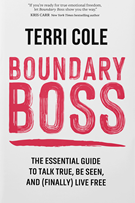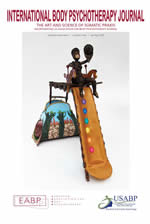How to Recollect and Reconnect: Family Tension and the Cure of Holidays
Elisa came to me a few days before a 10-day holiday with her 21-year-old son, Thomas. They had planned to explore Portugal’s local beaches, have time to relax and be together. But she felt uneasy, stressed about the trip. Her history was rather classic. She was divorced; had had a boy, an only child. As it often happens when parents separate, they share their feelings (verbally and non-verbally) with their children imposing their point of view on their children. And as happens with children in this situation, they learn quickly, if they don’t already know how, to play with their parents’ feelings and how to take advantage of the situation and turn things to their own benefit. Thomas was quite practiced at the art of manipulation. Furthering Elisa’s difficulties, her former husband had remarried and fathered two girls. Thomas demonstrated a clear loss of self-worth; he obviously was looking for an identity that he was not yet able to comprehend.
Passion & Presence: A Couple’s Guide to Awakened Intimacy and Mindful Sex
One simple sentence says it all: “Great sex is a mind-set, not a skill-set.”
Maci Daye embodies the essence of her new book, Passion & Presence: A Couple’s Guide to Awakened Intimacy and Mindful Sex, in this short statement. Yes, readers receive exercises to practice concepts presented throughout the book, but the crux of success resides in mindfulness including presence, curiosity, and authenticity, and a commitment to one’s self, one’s partner and the relationship.
You Are What You click: How Being Selective, Positive, and Creative Can Transform Your...
I started to write, “I’m the worst person to review a book on social media! I don’t use it.” Then, nearing the end of Dr Primack’s book, I realized, I use it more than I think.
I don’t Twitter, nor Instagram. I don’t TicToK or Messenger. I post articles on LinkedIn and use Facebook for the magazine. But a sense of who? me? reached out and grabbed me when Dr Primack discussed Facebook and canned birthday wishes: how people, like me, are reminded of “friends” birthdays so we can offer a greeting, an emoji. What truly tripped me was his discussion on our own take away.
Body, Movement and Dance in Psychotherapy NEWS and FREE DOWNLOADS
Body, Movement and Dance in Psychotherapy offers their call for papers and free access to several articles in their Spring 2021 issue: a Special Issue on Embodied psychotherapies in the digital age. According to Roz Carroll's introduction/editorial entitled, Embodied intersubjectivity as online psychotherapy becomes mainstream: Coronavirus measures have stimulated a re-organisation of the field of psychotherapy demanding a new level of technological skill, creativity and revision of established practice. This issue celebrates the resilience and adaptability of therapists and clients who have found new ways to stay connected, with contributions from Israel, Italy and Finland and the UK. It explores the new dimensions of online psychotherapy, offering vivid case studies of individuals and groups. The authors share their journeys of learning, re-thinking and reconnecting with sometimes unanticipated benefits for the work.
The Polyvagal Theory in Therapy, Engaging the Rhythm of Regulation
I was intrigued when I first came across Stephen W. Porges’ Polyvagal theory in 2008 reading his article entitled, Don’t Talk to Me Now, I’m Scanning for Danger. Porges’ Polyvagal theory redefined our former understanding of the autonomic nervous system, an understanding which has been in place since the mid 1800’s.
In 2010, at a Somatic Experiencing® training, when my co-trainees and I were grappling with how to apply the theory, we made up lyrics and sang them to the tune of “I Loves You Porgy” from Gershwin’s 1935 opera “Porgy and Bess.”
“We love you Porges, we’re polyvagal,
We love your theory, though it’s complex,
We want to use it, just please explain it,
Write a synopsis, that would be best.
We love you Porges. . . .”
(I’ll spare you the rest, but you get the point.)
Repeated requests at workshops and conferences for a user-friendly synopsis of his scholarly information as presented in The Polyvagal Theory, Neurophysiological Foundations of Emotions, Attachment, Communication, Self-Regulation (2011) prompted Porges to create his more recent publication, The Pocket Guide to the Polyvagal Theory: The Transformative Power of Feeling Safe (2017).
Going another step forward, Porges and co-editor Deb Dana published their newest anthology, Clinical Applications of the Polyvagal Theory: The Emergence of Polyvagal-Informed Therapies (2018). Now, Dana offers her well-developed method of incorporating the Polyvagal theory into clinical practice.
In her book, The Polyvagal Theory in Therapy, Dana offers the Polyvagal theory to psychotherapists as an elegant new science-based way of working with the body.
Active Pause® Part 2: If the pause is a natural part of the human...
What is that mindful practice? Is it sufficient to just have a ‘mindful practice’, such as mediation, or yoga, or Focusing? It would probably help some, but it wouldn’t be enough to replace the specific practice of inserting the lens. The more intense the potential danger, the more our reactive circuits take over, bypassing the circuits that counterbalance reactivity. In other words: The more intense the potential danger, the more we need to train our mind to recognize that this specific danger is safer than it appears to us.
Why am I calling this a ‘mindful practice’, as opposed to just ‘training’?
How to stay with the how: Some pedagogical suggestions on assisting the mindful sensing...
Many people, myself included, believe that the ability to clearly sense emotions and to experience bodily sensations is crucial for our mental, emotional, and physical health, but it does not come easy for everybody. The following pedagogical suggestions are based on my personal experiences and difficulties with mindfulness meditation and my studies of and experiences with Gurdjieff awareness-work, the Alexander-technique, Eugene Gendlin’s Focusing, Fritz Perls´ gestalt therapy, and especially Wilhelm Reich with his appreciation of “the how” when it comes to bodily expression, specifically contact with reality, with the body, with the emotions, with the self and with the “other. I offer that one can argue that to be concretely aware of one’s body's experiences connects us to the “here and now” and to the experience of reality, as opposed to self-deception in diverse forms, and that it is to be expected that the endeavor will be met with resistance and that assistance may be sorely needed.hat are reported (like stress reduction, attenuation of diverse clinical symptoms etc.)
Toward a Healing Society: A Core Energetics Perspective
Holy Moly! Every day in this country seems like a roller coaster ride and you know what, a part of me welcomes this new wave, especially the “bad” and “ugly”. Some people think it’s being exaggerated since our new administration took office but that isn’t so, the status quo is now merely being exposed. I see this as a good thing.
America must awaken to sexism, classism, heterosexualism, and unsustainable ecological practices. Beyond obvious prejudice, behind superficial masks of equality, beside our continued denial of rights to the vulnerable and the disenfranchised, we must openly acknowledge insidious issues that have been both denied and accepted as long as human beings have been alive. Exposing what has been obscured is essential to facilitate change.
The Online Setting and Body Psychotherapy
During the pandemic, I considered the repercussions that existed and the modifications necessary to use my time most effectively with clients in the online psycho-therapeutic setting. Despite the impositions and limitations of our electronic settings, I considered how we most effectively, most efficiently, and most negentropically adapted to our unanticipated, new reality.
SPT Magazine is pleased to announce the release of Volume 12, Number 1, 2022
SPT Magazine is pleased to announce the release of Volume 12, Number 1, 2022. If you missed any of our articles this year, you can now access the entire year in one downloadable PDF on our website.














